- Walking Dead Saints and Sinners Best Weapons - July 31, 2023
- Pistol Whip Style Guide - June 8, 2023
- Bonelab Best Mods: Our Top 16 - February 15, 2023
I’ve been pretty vocal over the years so far as my adoration for BONEWORKS — a title that did more than any other to push the medium of VR forward: a game that through its fearlessness ended up doing more for the ultimate goal of immersion than anything else.
It seems cliche to suggest BONEWORKS was ahead of its time with what it accomplished, but it was an undeniable milestone.
Of course, whether or not you enjoyed BONEWORKS depends on which side of the fence you sat on. Either it was a revolutionary VR title like no other or a glorified tech demo that restrained the medium within the confines of the indie scene rather than pushing it toward AAA territory.
It was a polarising game for sure, but that’s what’s interesting about it and its creators. Naturally, it’s also one of the most interesting aspects of the hotly anticipated sequel, BONELAB. The new game has been out for a couple of months now, and if you’ve read anything about it so far, you’ll notice widely differing opinions.
I went in with high expectations, but did it live up to my own hype? Did it reach the heights of “VR’s next big thing”? And is all that even relevant in the first place?
A surreal ordeal

I imagine creating a sequel to BONEWORKS was a difficult thing to do. It would initially make sense to double down on what people loved about that game — the physics, the movement, the strange, off-kilter story — but that’s also what many people had problems with.
I can only assume that SLZ’s philosophies lie less as people pleasers and more as “this would be cool, let’s do it!”. While somewhat antithetical to solving the barriers new adopters have with the medium, my first steps in the game make me once again appreciate the studio’s passion for surreal experimentation.
This sentiment was expressed most notably by director Brandon Laatsch through an excitable video showcasing what they’d been working on.
Having the game begin by looping a virtual noose around your virtual neck, with cultish medieval onlookers staring at you intently, is exactly the sort of thing I’ve come to expect from these games.
This sequence and the subsequent plunge into a network of dark caves sets the tone for BONELAB’s more surreal world compared to its predecessor.
The game’s setting is still grounded within the world of tech conglomerate Monogon Industries, but I was impressed with the wide range of different locals this time around.
Myth OS City is a much more varied arena this time around featuring high-speed rail networks and cyberpunk-style cityscapes; it plays much less like Half-Life 1 set within a cohesive facility, and more like Half-Life 2: an environment with distinct, albeit connected set pieces.
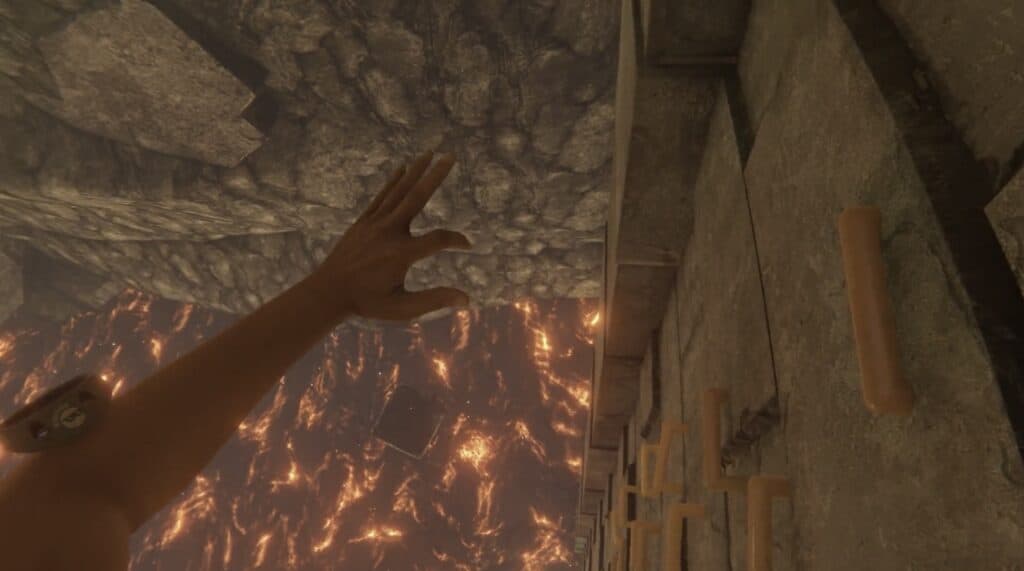
Understanding what’s actually going on, though, is as confusing as ever. You start the game off in an area akin to Valve’s The Lab — a hub with a collection of access points featuring different self-contained games like gun time trials and parkour challenges.
Even if you’re intimately familiar with BONEWORKS lore, you’ll have a hard time piecing things together from the riddle-laden clipboards strewn about the game world. But then that is kind of the point.
BONELAB relishes in its indie roots by drip-feeding its narrative through contextual elements. The story takes a heavily environmental approach as it did in the last game, which allows the main elements to shine.
Let’s Get Physical
The developers shied away from traditional tutorials with BONEWORKS, and BONELAB is similarly lacking in this department; you will need to grab onto a giant mechanical hand at one point, but that’s all the handholding you’re going to get here.
Couple this with the familiar loose approach to storytelling, and this isn’t the easiest game for new players to experience.
In fact, this is one of the worst games to play if you’re completely new to VR. But then without that disregard for comfort, we wouldn’t have the degree of freedom the series is known for. As the saying goes, you’ve gotta break some eggs to make an omelet.
This wouldn’t be much of a BONEWORKS sequel without a new arsenal of guns to use, and thankfully, it delivered in that regard. Shotguns are finally here along with an onslaught of new assault rifles, submachine guns, and pistols, and there are a wealth of new melee weapons to smash Nullbodies over the head with.
In fact, although gunplay feels more satisfying than its predecessor, it’s in the hand-to-hand combat where the developers seem to have upped the ante the most.
BONEWORKS introduced the ability to physically grab enemies on any part of their body for realistic fights. You could grip an enemy by their skull and sucker punch them, or perhaps tripping them over and smashing them down with a sledgehammer was more your bag.
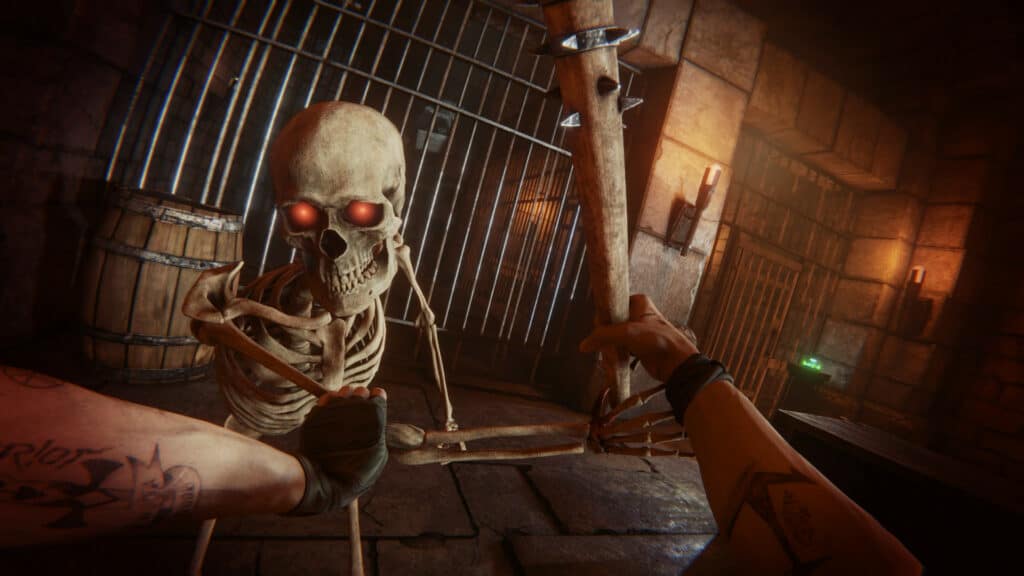
But the melee fighting now feels less like the infamous scuffle between Mark Darcey and Daniel Cleaver in Bridget Jones’ Diary, and more like that of Morpheus and Neo’s dojo battle from The Matrix.
Both blunt and blade weapons now connect with the precision you expect, and bodies now have a greater rigidity to them making fights feel much more realistic.
Of course, a more relevant comparison to the latter film would be the slow-motion bullet time mechanic, which is back in full force and better than ever. It takes a bit of fiddling to get used to, but once you do, you’ll be ninja-jumping on enemies with a Katana in no time.
The real testimony to the sheer fun of BONELAB’s physics-based combat is the arena mode. I spent hours at a time fending off waves of enemies that featured increasingly complex geometry — even if I did wish there was more variety in the sort of foes I was facing off against.
Dullbodies
Despite the utter glee found in pumping them full of lead, I was really hoping for some exciting new enemies to fight this time. Technically there are some new encounters, but not really.
Walking skeletons were a welcome new addition, but before long, you realize they’re just reskinned Nullbodies — the lolloping orange humanoids from the first game that haphazardly swipe at you.
Quite unbelievably, these skeletons are the only new enemies. The Nullbodies are back and essentially unchanged, as are the painfully boring but armed Omni Projectors and the Half-Life Head Crab-inspired Crablets.
Their AI doesn’t seem to have improved from the original game, either. Most just shuffle dumbly towards you offering no real challenge other than in their numbers, and those that do fire projectiles make no real attempts to evade you.
I get that a large part of BONELAB is to make you feel dominant over these enemies so as to let the physics shine, but there could’ve been big improvements here.
It’s one of the only elements of the game that makes it feel like a glorified tech demo as detractors claim. The enemy design feels like a huge missed opportunity to show naysayers that the game is more than the sum of its parts.
I forgot about that after a while, however, due to the element that has clearly taken all of SLZ’s development attention.
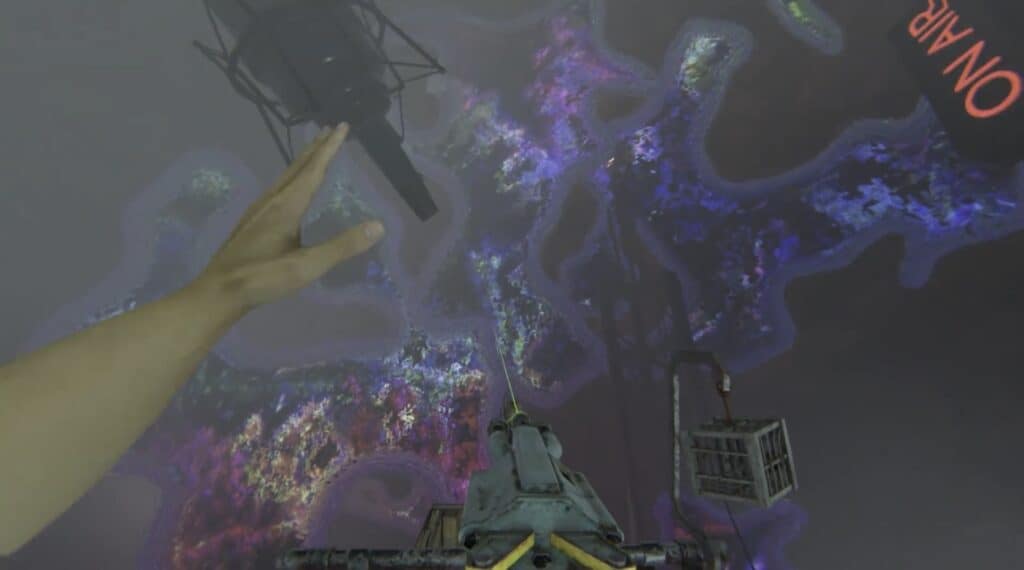
Shapeshifting Through the Void
As a BONEWORKS fan, you’ll likely get the feeling something’s missing during your first couple of hours with Bonelab — and then that void (pun intended) is filled.
The flagship toys of this game are the swappable avatars. From a module on the wrist, players can switch between an array of vastly different avatars on the fly.
These range from a hulking walking tank or sprightly anime girl to a towering armored warrior and a three-foot hairless cat — and there are a total of six so far.
The gimmick here is that you’ll wear these avatar skins like special suits and take on their abilities. The big guy can hurl around null bodies with one hand like they’re made of cardboard, while the game’s parkour elements are vastly expanded on account of the anime girl’s enhanced speed and agility.
There’s even a level that recreates Trinity’s famous rooftop getaway from The Matrix: a high point of the game only possible due to the altered physics of a specific avatar.
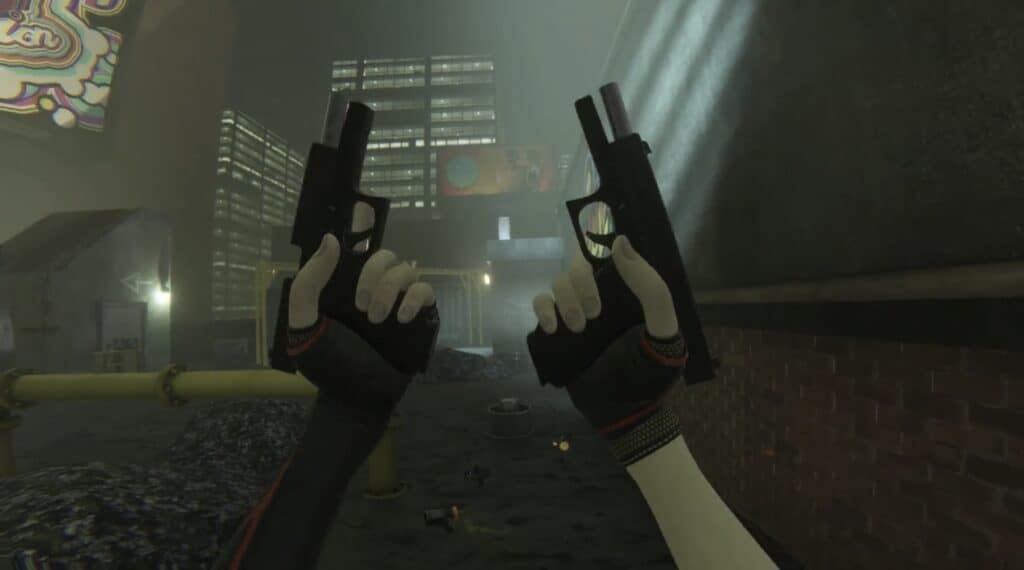
Weapons also handle a lot different depending on the character that wields them. While one-handing a sledgehammer will pull the cat character to the floor like a sack of potatoes, the heavy avatar can wield one in each hand like a deadly mechanized construction worker.
Gun recoil also becomes a nonissue for the larger characters — there’s nothing quite so fun as mowing down enemies with an AK-47 in one hand and an M16 in the other.
Donning these new abilities is SLZ’s way of saying “let us show you what the Marrow engine can do!”.
Gaining access to the avatars blows the doors wide open so far as player agility, combat, and puzzles, and the added depth and complexity to the avatar-centric sections is the main aspect that distinguishes BONELAB from the groundwork laid in BONEWORKS.
Swapping between characters is accomplished with ease on account of the wrist mount, and puzzles and environments have been cleverly designed to require the utilization of multiple avatars per section. The result is a game that goes far beyond the concepts explored in the debut.
Of course, this extra degree of freedom currently brings with it several bugs and glitches. If you enjoyed the last game you’ll most definitely enjoy this one but, similarly, if you didn’t like BONEWORKS and considered it a janky mess, you’ll likely maintain your viewpoint.
For me, I can look past the jank as an inevitability for bold experimentation, but I can see that for many, it’ll get annoying fast.
Jank life
I came in expecting a lot of physics-based anomalies. When you give the player this amount of freedom within a medium that’s still finding its feet, some degree of awkwardness in the controls is to be expected. What I wasn’t expecting, though, were some aspects to be worse than BONEWORKS.
The most obviously consistent aspect that springs to mind are holding the weapons. The player is now able to grip weapons from more angles, but in many cases, to make another movie reference, my wrist seemed to resemble that one scene from Harry Potter: and the Chamber of Secrets where the bones in harry’s arms dissolve.
It was more off-putting than it should’ve been because this game relies so heavily on the cool factor: assault rifling an enemy in the face in slow motion is always going to look impressive, but having your in-game wrist look dislocated is kinda the fly in the ointment.
There also seemed to be more instances of falling into inescapable geometry glitches than BONEWORKS had. For all that it was complained about, I can’t once recall a time when I had to restart that game, but here, I had to reboot four or five times across my playthrough.
BONELAB does feel a little more rushed than BONEWORKS — perhaps I should’ve been dubious at the point in which Brandon excitedly announced out of nowhere that it was launching more or less immediately.
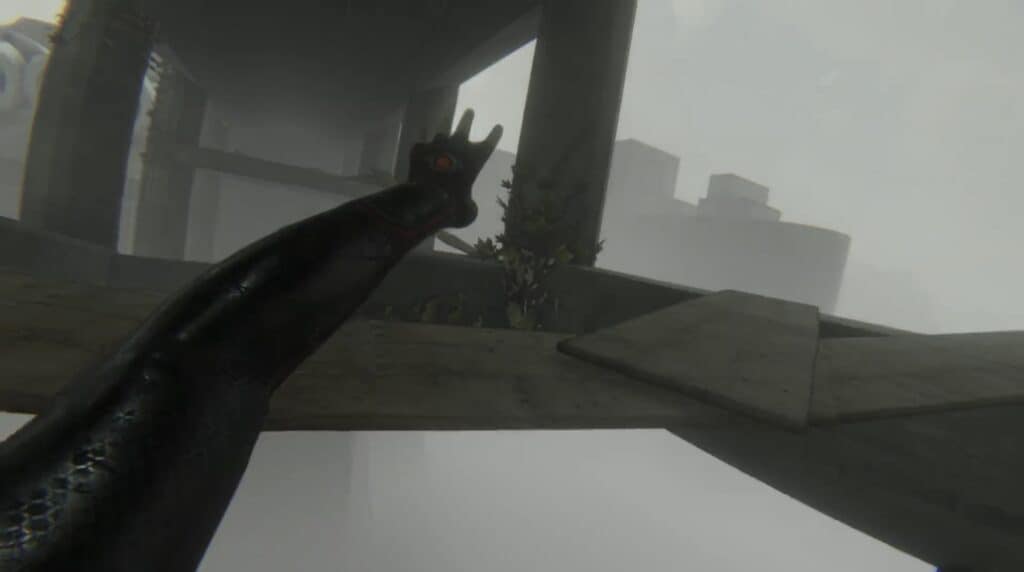
Despite the bugs and glitches, though, it wasn’t enough to substantially taint my overall experience. The game does still feel kind of like an early-access game at times, but Stress Level Zero should be trusted when it comes to listening to feedback and implementing changes.
Their games have always evolved beautifully with the player base, and I have no doubts then the aforementioned bugs will be ironed out.
Alongside the inevitable patches over the coming months, we’ll also have more free content to look forward just as we did with Boneworks. There are a ton of hidden secrets in the game that currently makes no sense but that will be explained in further updates.
The Community Voice
As has been a foundational feature for many new games these days, mod support is a huge part of the fabric of BONELAB. Mod support in BONEWORKS was appreciated but individual mods didn’t have much distinction, which is the same way I viewed those seen after the launch of Half-Life: Alyx.
BONELAB, though, is essentially VR Gary’s Mod at this point. SLZ’s framework has matured perfectly to support a hugely diverse array of mods: whether you’re up for Go Karting around Mario Kart-inspired maps or fancy wielding the Mini Gun from DOOM Eternal, there’s going to be something for you here.
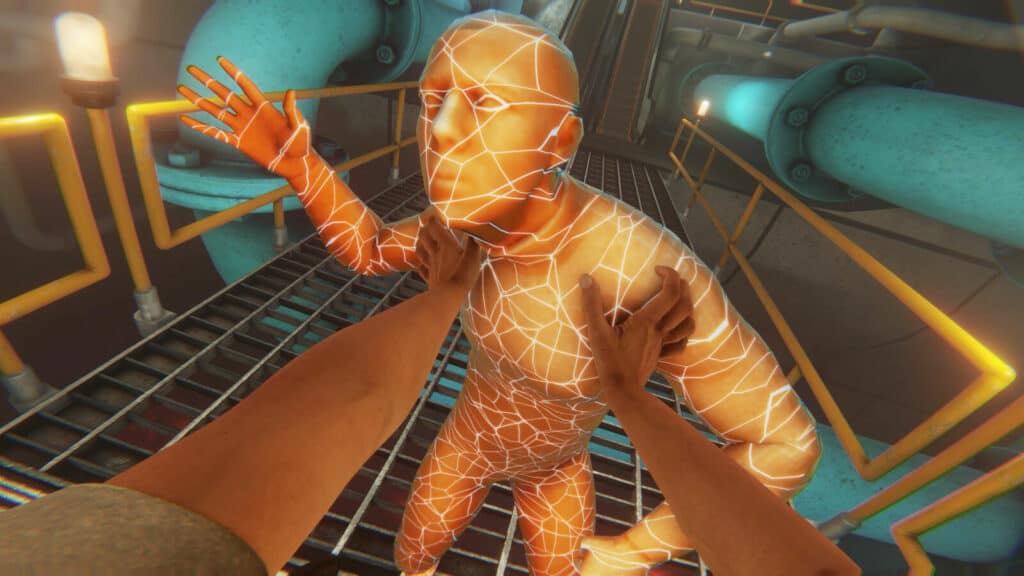
The pool of new content is growing every day, and it’s thoroughly impressive to see the new and innovative ways modders are implementing this awesome tech. It makes this entry a truly infinitely re-playable title.
Of course, there’s also a ton of new content to explore after you’ve finished the main campaign. Hunting for collectibles was always a blast in BONEWORKS, and that feature is back better than ever, but the best feature is the ability to replay earlier levels with the new avatars.
When you return to those levels you couldn’t originally use the avatars with, you’ll find they open up into more expansive environments than you initially thought: there are so many cool secrets to find now that you have the benefit of being super tall or brutally strong.
The Verdict
Score: 8.5
As much as I loved Half-Life: Alyx, it was a very carefully curated experience compared to BONEWORKS and BONELAB.
Valve worked so hard to make everything perfectly accessible for all players that features like climbing and even sprinting were noticeably absent. That’s an admirable compromise, and should Valve have taken the SLZ approach, the review scores would likely be very different.
But without the pressures of making the next AAA blockbuster or of selling a 1k HMD, Stress Level Zero allow their product to breathe and evolve.
They’re one of the few independent studios that have a platform to innovate in the technological sense, and this odd mixture of priorities is what makes their games special and unique.
Like its predecessor, BONELAB is a difficult game to critique: you can see its negatives as positives and vice versa, but now that we know what these sorts of games are going for, it’s been easier to form an impression of what Stress Level Zero is all about.
BONELAB is ultimately more of what is a polarising gameplay system, but no matter your stance, one thing is for sure: we need companies like SLZ if VR is to gain momentum.
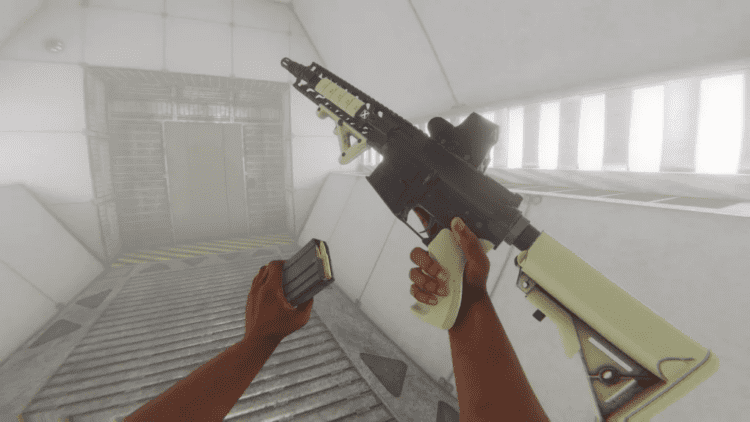
One element I’m one hundred percent sure everyone will love is the sublime soundtrack. Michael Wyckoff’s analog synth music was a crucial aspect in honing the atmosphere of the first game, but in BONELAB, he goes totally wild.
The BONEWORKS soundtrack was purely instrumental, but here we’re treated to several beautifully scored vocal accompaniments. These range from EDM-style female singers to old-school crooner male pieces, and Wyckoff masterfully weaves various different genres into his unique, hypnotic style.
His music can be found on YouTube or Spotify, and I highly recommend you check it out to give you a flavor of the game (if you’re really interested, there’s this excellent making of video on YouTube, too).
If you’re totally new to the series, you owe it to yourself to give BONELAB a try. It might not end up being your cup of tea, or you might find it the most immersive VR experience on the market. Regardless, it’s a must-play.
Pros
- SLZ’s trademark physics are back and better than ever
- Clever and original puzzle and level design thanks to the new avatar feature
- A huge degree of replayability that will only be expanded upon in the future
- An incredible soundtrack
Cons
- A similar disregard for common gaming conventions as BONEWORKS had which might be off-putting for some
- Lackluster enemy designs with no new standouts
- Currently more janky than BONEWORKS was
Alternatives
BONEWORKS

BONELAB’s predecessor is still a great time even after you’ve played this game. It’s not as feature-rich, but if you appreciate the world Stress Level Zero has created and want to dive into the lore, BONEWORKS is a must for a new fan!
Virtual Virtual Reality
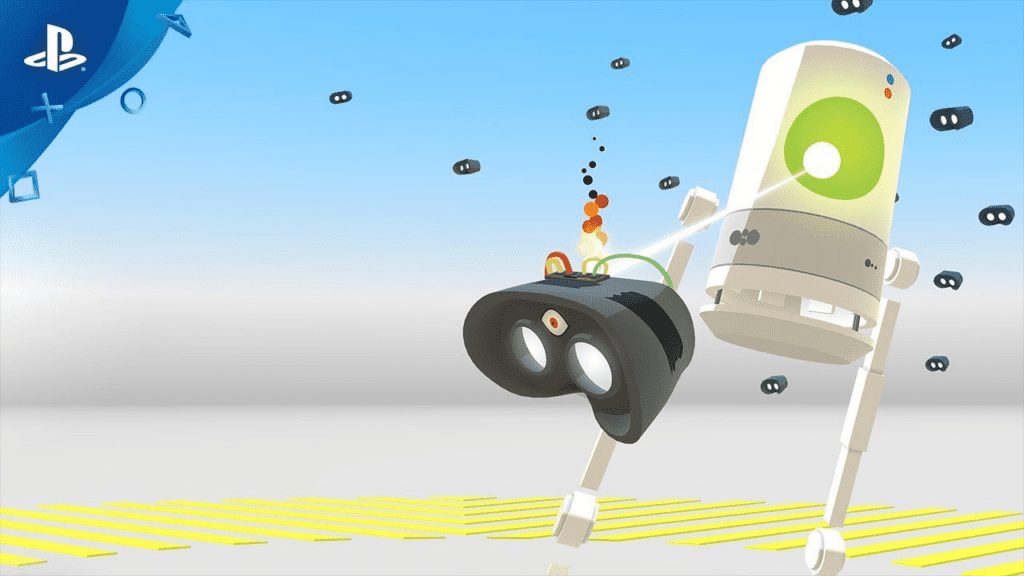
This is a strange game for sure, and fans of the wacky world of Myth OS are sure to appreciate it. The less said about the story the better as not to spoil it, but Virtual Virtual Reality’s game-within-a-game premise takes you on a ride like no other. If you enjoy it, there’s also the sequel to check out: Virtual Virtual Reality 2.
Half-Life: Alyx
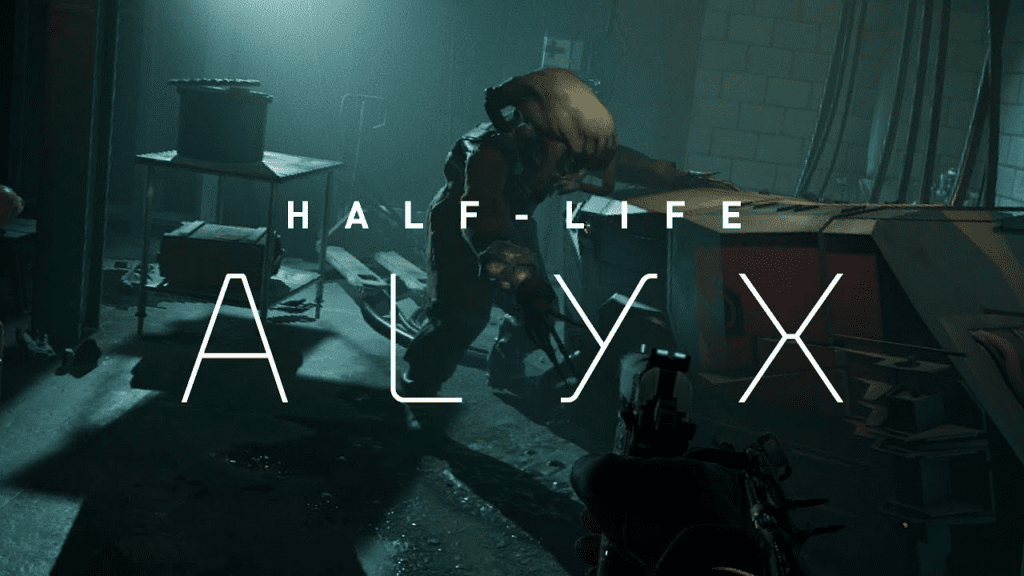
While ultimately nothing like BONELAB, it’s very clear the team drew heavily from the Half-Life series when designing their world.
Half-Life: Alyx is one of the finest VR games ever made, and a true alternative in the sense that it’s a far more structured, polished product than SLZ’s games. If you loved the physics in BONELAB, you’ve got to do yourself a favor and play the other big name in VR.
The Walking Dead: Saints and Sinners
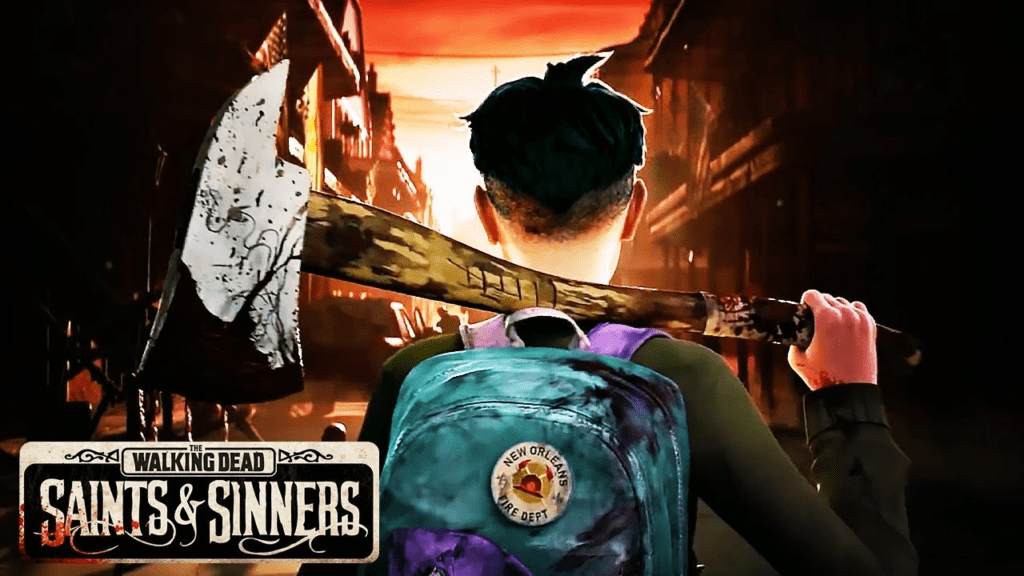
If there’s one thing you have to give BONELAB credit for, it’s the incredibly satisfying combat – both ballistic and melee based.
Another game that executes these features perfectly is The Walking Dead: Saints and Sinners. You have a similarly diverse set of tools to dispense your enemies with, and it’s a great adjunct if you’re looking for more of a horror vibe.
Frequently Asked Questions
Question: I had a pretty hard time with BONEWORKS so far as motion sickness. Has this been improved in Bonelab?
Answer: Unfortunately not. In fact, I’d say some scenes are even worse for motion sickness!
BONELAB will test the stomachs of even the most veteran of VR users, though, so you can certainly build up to a point where you can tolerate it. Slowly work your way up from games that don’t use full locomotion controls to those that do.
Question: I’m in the market for a headset and can’t decide on the Quest 2 or a PCVR headset. In regards to this game, which is best?
Answer: As far as the graphical fidelity goes, the PC option will always be better than wireless (headset and PC hardware dependent, of course), but BONELAB was very much built to support the Quest 2. You can find a comparison between PC-based headsets and Quest 2 here.
The game runs great on either headset, but the untethered approach could be considered more immersive because you don’t have to worry about a cable.
Question: I can see that modding is a huge focus in this game, but I’m worried mods might harm my computer/Quest 2. Should I be?
Answer: Absolutely not. BONELAB has implemented mods directly into the main game, meaning you can browse and experience all the latest stuff without having to mess around with files outside the game.
For Quest 2, it’s just a matter of a few straightforward steps which have been detailed well in this article.
Play log
Linden sunk a total of 12 hours into BONELAB. Having completed the main story, he’s now headed back in to find every collectible, beat his high score in the arena, and try out all the latest mods!

